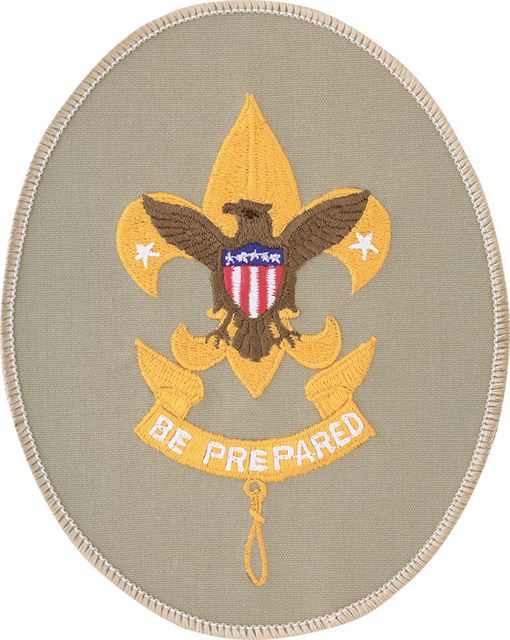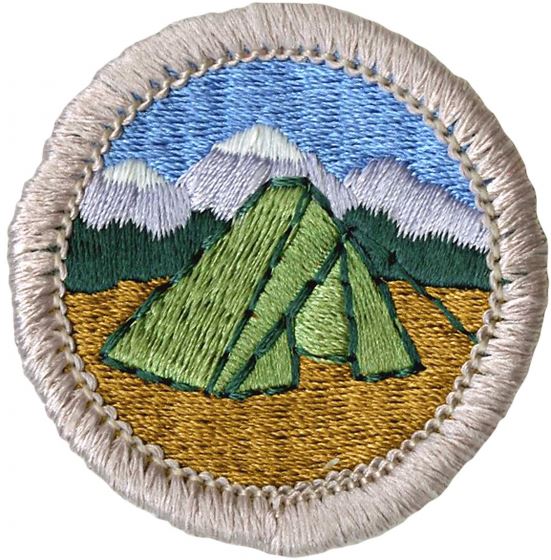
Advancement
Note: Scout Ranks are tracked in Scoutbook. To check your scout's progress go to Scoutbook.com.

This page is broken up into 4 sections. Click on the link below to take you directly to that section:
- Rank Advancement
- Merit Badges
- Merit Badge Process
- Religious Emblems
Rank Advancement
The first four ranks in the Boy Scout program are: Scout, Tenderfoot, Second Class, and First Class. Most of the requirements for these ranks are based on outdoor activity skills. A few of the requirements can be accomplished at the weekly troop meetings. This means that you should encourage your youth to participate in as many troop outdoor activities as possible.
Unlike Cub Scouting and Webelos, a Scout’s parent or guardian may not sign off Scouts BSA requirements. The Senior Patrol Leader, Assistant Senior Patrol Leader, Troop Guide and Patrol Leaders may sign off requirements provided they are First Class rank or above and have earned the rank themselves (except for merit badge requirements). Adult leaders who may sign off Scouts must be registered members of the Troop. Where a parent is an adult leader it is recommended that another registered adult leader sign off on that youth’s requirements.
Scouts BSA advancement is a four-step process:
- The Scout learns. A Scout learns by doing. As he learns, he grows in ability to do his part as a member of his patrol and troop.
- The Scout is tested. A Scout may be tested on requirements by his patrol leader, Scoutmaster, assistant Scoutmaster, a troop committee member, or a member of his troop.
- The Scout is reviewed. After a Scout has completed all requirements for a rank, he first has a Peer Review, then a Scoutmaster Conference, then a Board of Review. For Tenderfoot, Second Class, First Class, Star, Life, and Eagle Palms, the review is conducted by members of the troop committee. The Eagle Board of Review is conducted in accordance with local council procedures. (The rank of Scout does not have a formal Board of Review, but earns the rank once the Scoutmaster Conference has been conducted).
- The Scout is recognized. When the Board of Review has certified a youth’s advancement, he deserves to receive recognition as soon as possible. This should be done at a ceremony at the next troop meeting. The certificate for his new rank may be presented later at a formal Court of Honor.
Peer Review
When a youth has finished all the requirements for a rank another youth meets with him and goes over each requirement to review skills and knowledge learned for the rank. The peer youth initials in the book to certify that the ranking youth is ready for the Scoutmaster Conference.
Scoutmaster Conference
For every rank in Scouting, a youth must participate in a conference with the Scoutmaster. This conference is held when your youth has completed all requirements for the next rank he wishes to attain. During this conference the Scoutmaster discusses with your youth his strengths and interests to determine ways he can use these in his scouting activities. It is up to your youth to decide what goal(s) he will set for himself as a growth agreement. Your youth must also decide what badges and awards he will work on toward the next rank.
Board of Review
Once a Scoutmaster Conference has been completed, the youth then participates in a Board of Review. A Board of Review is conducted by Adult Leaders, other than the Scoutmaster and Assistant Scoutmaster with at least one Committee Member present at the review. The parents of a Scout under review are not permitted to be on the board. The board is compromised of a minimum of 3 adults and a maximum of 7. They review with the youth the path to this advancement. Questions are asked in review to see if the youth has satisfactorily completed the requirements for rank advancement. However, the review is not intended to be an interrogation or time of testing. It provides the youth the opportunity to speak about his accomplishments and his future goals. One benefit of the review is to prepare the youth for future interviews. The board will sign off on the advancement after conducting the review in the youth’s Boy Scout Handbook to show that all requirements have been properly signed off.
Merit Badges
The most challenging awards to earn in Scouting are merit badges. A youth may begin to work on a merit badge as soon as he feels confident to do so. It is recommended that he wait until after he has achieved the rank of First Class to begin earning merit badges. There are, of course, certain exceptions, such as summer camp, where all youth are encouraged to participate in merit badge classes, or regular meeting merit-badge sessions where the troop participates as a group in earning a specific badge (such as fingerprinting or archery).
There are more than 100 merit badges, which cover a varied range of skills and interests. These include coin collecting, water skiing, boating, first aid, computers, engineering, sports, citizenship, and many others. Some merit badges have prerequisites that need to be met before taking them. A Scout is responsible for reviewing the requirements for each merit badge he wants to work on.
A Scout works under the guidance of a merit badge counselor. This person is knowledgeable of the subject and is approved as a counselor by the Sequoia Council, BSA. A parent/guardian should not be a counselor for his/her scout alone. When a parent offers to be a merit badge counselor, they must offer this opportunity for the whole troop not just their child. The Scoutmaster may guide the youth in the selection of subjects. When a youth feels that he is ready to earn a merit badge, he must obtain permission and a “blue card” from the Scoutmaster. The Advancement Chair will then give him the name and telephone number of an approved counselor from a merit badge counselor list provided by the Sequoia Council, BSA.
The rest is up to the youth. The youth must take the initiative to earn the badges by completing all requirements and scheduling meetings with the assigned counselor. You may want to look over the requirements, ask questions, and encourage him to begin. Because the Boy Scouts of America does not permit a youth member to work alone with an adult, each youth must have a “buddy” (another youth or parent) to accompany him. Merit badge pamphlets may be purchased at the Sequoia Council office. The troop library maintains copies of many (but by no means all) pamphlets and these are available for your youth to check out. He may also wish to ask his fellow youth if they have a pamphlet for the merit badge he wishes to pursue that he might borrow/use.
Merit Badge Process
Scouts (not parents) need to do the following (in this order):
- Get permission from the Scoutmaster and obtain a blue card.
- Get contact information for a merit badge counselor from the Advancement Chair.
- Get the appropriate merit badge pamphlet (book) from the Scout Shop or online (some digital copies might be available online).
- Contact the merit badge counselor BEFORE starting work (be sure to copy a parent or the Scoutmaster on all communication).
- Stay in contact with the merit badge counselor as you work (always include another adult on all virtual or in-person meetings).
- Make corrections and clarifications on work as requested by the merit badge counselor.
- Remember: All work should be done by the Scout (not the parent).
Religious Emblems
As a Scout, your youth is expected to be reverent and to respect the convictions of others. In addition, there is a Religious Emblems program through which your youth can carry out a program of study, action, and service as a Scout in his religious institution. See the Boy Scout Handbook for more information and colorful illustrations of these emblems available through the various denominations and discuss them with the religious leaders of your faith.